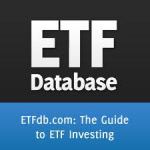Fast on the heels of that New York Times op-ed by a former GoldmanSachs derivatives trader, who in a public farewell tribute to the employer he had just “fired” (claiming said employer caused both the culture and very corpuscles of the firm’s ecosystem to become polluted with the toxic virus “Conflicts-of-Interest Syndrome”), another, and potentially more blistering conflict-of-interest issue is beginning to bubble.
Before revealing the team logo(s) associated with the latest event, its important to first look at the update to the saga of the former Goldman trader–who is now actively shopping a new order–for a soon-to-be-written tell all.
In statements released to the press, Goldman, as well as Morgan Stanley have publicly proclaimed the same-sounding, back-handed response re: the Op-Ed author’s revelations regarding conflicts of interest on Wall Street: The respective bulge bracket PR statements read pretty much like this: “..In connection with ongoing compliance procedures, [our] investment banking unit will be doing a full review of all conflict of interest policies as they pertain to the firm’s internal guidelines, as well as any/all regulatory guidelines.”
Given the compression of the investment banking industry over the past 5 years, its almost impossible to envision that any IB deal administered by any of the few remaining Wall Street banks could be done without some kind of conflict, someplace!
Now to the new shoe that may about to drop, its aimed at the heart of administrative epicenter for the $3.5 trillion investment advisory space:
According to one agnostic brokerage industry expert (who chooses to remain anonymous because his/her life insurance policy is capped at $1million), those concerned about conflict of interest might be more concerned about a different conflict: the one that could embroil the $3.4 Trillion (that’s trillion with a “T”) investment advisory space, which to a great extent, is administered by four or five large, and several smaller “custodians”, whose services typically include reporting, back office administration and trade execution.
Some believe custodians may be reaping “tens, if not hundreds of millions of dollars in “preference payments” from Wall Street bank trading and “facilitation desks”, in consideration for directing their client orders to those bank trading desks for execution.
In the vast majority of those cases, those trading desks may not actually be providing the best price available in the market, and are also betting against the custodian’s customer, if only for a brief moment in time, to hopefully profit from those bets. Let us not forget to caveat the important part of the claim: the clients are not receiving any portion of the payments made to their custodian, as the payments may not necessarily be in the form of cash.
The “payment-for-order flow” topic, and more poignantly, the imposition of usurious “step-out fees” on clients who would rather “trade-away” from their custodian and secure best execution via “agency-only” brokers is an issue that has occasionally sprouted up across the Industry in the form of small brush fires, but most have been quickly extinguished by those having an agenda to brush the issue under the table.
Times may be changing.
Once commission-centric, custodians have since given up the brokerage industry’s race to zero by competing for institutional (and retail) customer in the form of cheaper trading commissions. Instead, fees for execution, research, and other fungible services, are now based on assets under management, enabling the custodians to to perform a sleight of hand and promote this new message: “Trade commission free, all fees are fixed based on AUM.”
Nothing is free, other than maybe air. According to some, the more recent conflict-of-issue narrative is creating sparks that could turn into a barn-burner–especially for very, very short list of Tier 1 custodians who dominate the hosting of the aforementioned $3.4 trillion in assets; assets managed by RIAs and institutional managers who in turn, actively manage tens of thousands of end-customer sub-accounts via the buying and selling of of single stocks, ETFs, listed options and fixed income products.
Some insist they know, while many others can only suspect, that certain custodians are enhancing their revenue streams at the expense of their own clients, who are otherwise handcuffed to the custodians’ order execution desk.
The handcuff is in form of “step-out ticket charges”, a fee similar to a ‘corking charge’ that you might be subject to when bringing in your own bottle of wine to the restaurant that you are dinging at. These ticket charges, which range from $15-$25, are imposed on each sub-account when the custodian’s client wants their order executed “away” by any “agency-0nly” firm who specializes in seeking out the most competitive price, or best execution in that particular asset class.
To illustrate: Joe RIA intends to purchase a block of 50,000 shares of EMG-ETF on behalf of his 100 clients. After execution, he will pro-rate 500 shares to each of the 100 client sub-accounts that Joe RIA manages. When Joe executes through “Clark His Custodian”, there is no commission charged on the trade, and no ticket fees imposed to allocate to sub-accounts managed by Joe and held in custody by Clark . Great deal, right?
If you missed the (*) asterix that pointed to the small print in your clearing agreement, “If you want to step-out your order to a third party broker in an effort to secure a better price execution, please note: you will be subject to a fee of $15-$25 for every sub-account that you want your block trade allocated to.”
This is where the burning rubber meets the road: When Joe RIA discovers he can execute the 50,000 shares 5 cents ‘better’ via a third-party broker (a savings of $2500 that goes directly to Joe’s Alpha), Joe also discovers that he’s subject to a $25 ticket charges per account, wiping out the cost savings that Joe could have captured for his clients.
Executing at a ‘better price’ is actually not that hard accomplish for seasoned execution experts in the course of trading a majority of ETF products (or other products, such as option spreads)–especially those who take a systematic approach to canvassing a broad assortment of liquidity providers. Clark the Custodian has no incentive to spend time/effort to canvass the market. His only obligation is to deliver prices back to his clearing customer within the context of the NBBO.
Its a strange story, for sure. Something is certainly amiss when it costs “nothing” to execute “in-house”, but if you go out of house for a better price execution, you find yourself in the proverbial out-house, without any TP.
Stay tuned.



 ]:
]:








